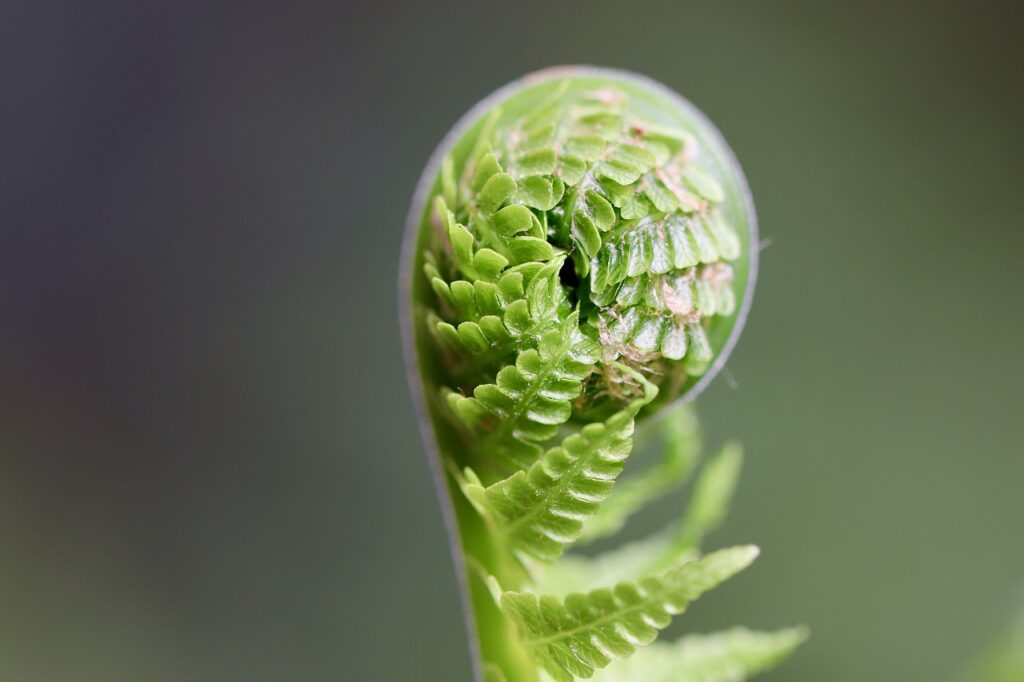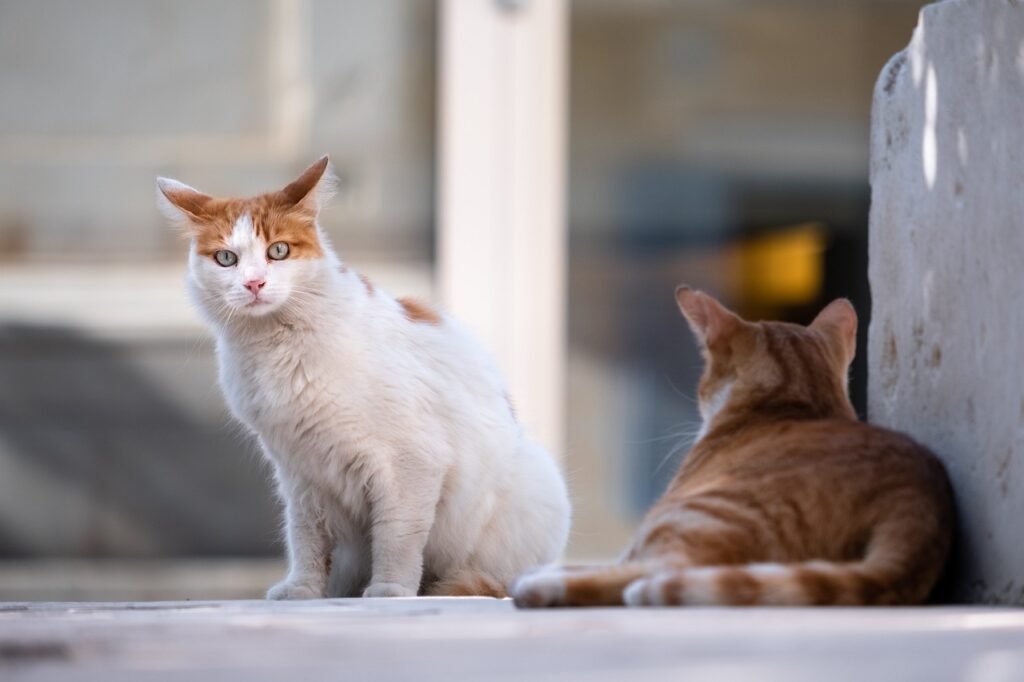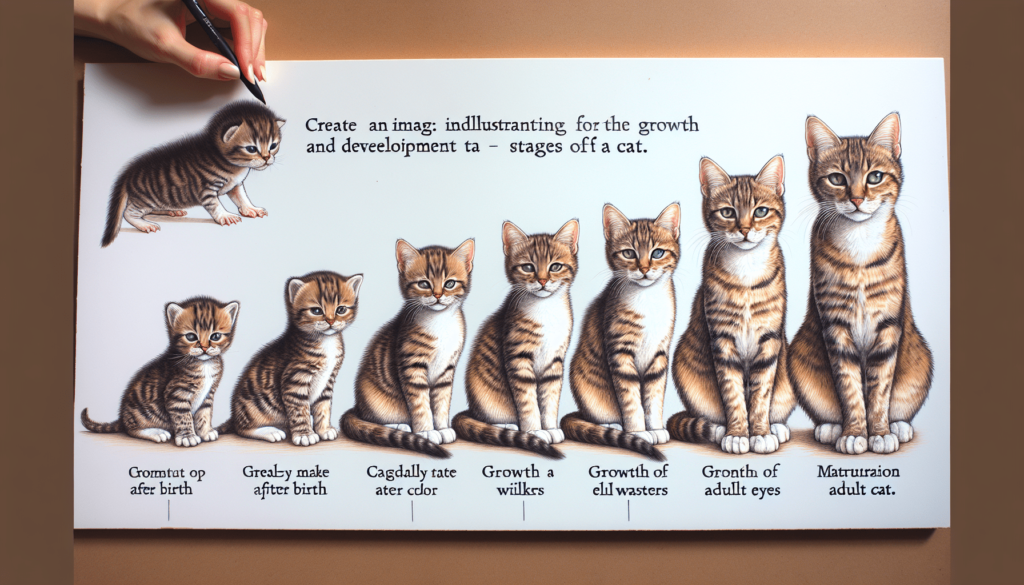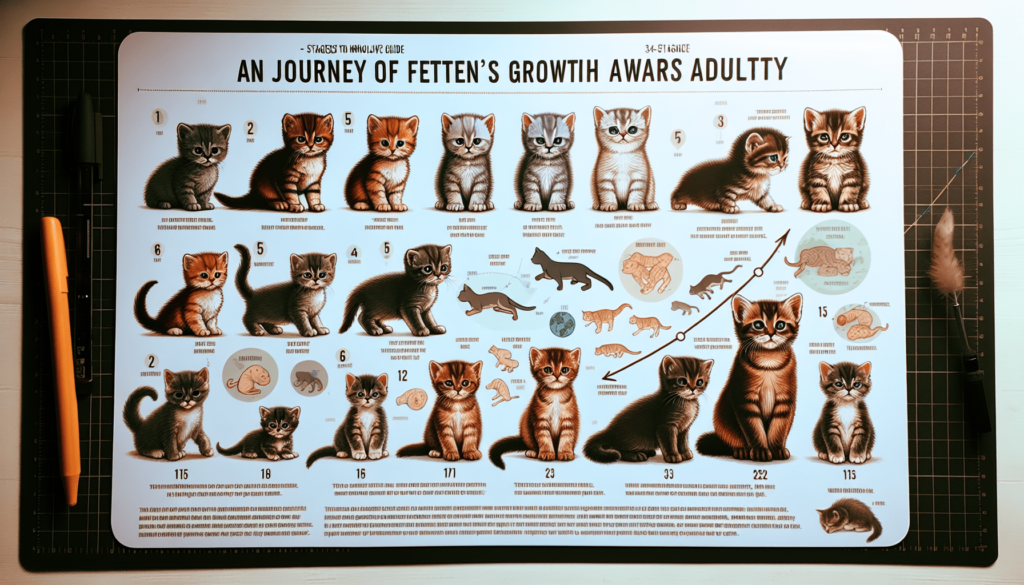Curious about when your feline friend is going to stop growing? Wonder no more! In this article, you’ll discover the fascinating answer to the age-old question – when do cats stop growing? From their adorable kitten days to their regal adult size, we’ll explore the growth stages of our whiskered companions. So sit back, relax, and let’s uncover the secrets behind cats‘ growth process together!
Understanding Cat Development Phase
The Newborn Stage
The newborn stage is the first phase in a cat’s development. It begins from birth and lasts for about two weeks. During this stage, kittens are completely dependent on their mother for everything – from warmth to food. Their eyes and ears are closed, and they rely on their sense of touch and smell to navigate the world around them. At this stage, their growth is rapid, and they double their birth weight within the first week.
The Kitten Stage
After the newborn stage, kittens enter the kitten stage, which typically lasts from two weeks to eight weeks. This is an exciting and playful phase where kittens start exploring their surroundings. Their eyes and ears open, and they become more curious about the world. During this stage, it’s crucial to provide them with a safe and stimulating environment to encourage healthy development.
The Juvenile Stage
The juvenile stage begins around the eighth week and lasts until the age of seven months. This is the phase where kittens start to resemble adult cats in appearance and behavior, although they are still growing. They become more independent and develop their hunting and social skills. It’s essential to provide them with plenty of opportunities for play and socialization during this phase.
The Adult Stage
Once a cat reaches seven months, it enters the adult stage. At this point, their growth rate significantly slows down, and they have almost reached their full size. However, some breeds continue to slowly grow until they reach one to two years old. The adult stage is characterized by full physical and mental maturity, and cats are fully capable of reproducing at this point.
Factors that Influence Cat’s Growth
Genetics and Breed
Genetics and breed play a significant role in determining a cat’s size and overall growth timeline. Some cat breeds, such as Maine Coons and Ragdolls, are known to reach larger sizes compared to other breeds. The genes passed down from their parents influence their growth patterns and physical characteristics.
Diet and Nutrition
Proper diet and nutrition are crucial for a cat’s growth and development. A balanced diet that meets their nutritional needs is essential during all stages of their life. Kittens require a diet rich in protein, fats, and other essential nutrients to support their rapid growth. As they transition into adulthood, their dietary needs may change, and a well-balanced diet is still essential for maintaining their health.
Spaying and Neutering
Spaying and neutering can also impact a cat’s growth. These procedures involve the removal of the reproductive organs, which can affect their hormone levels. Generally, cats that are spayed or neutered early tend to have a slower growth rate, resulting in them reaching their adult size earlier. On the other hand, delaying these procedures may allow for slightly longer growth spurts.
Health Issues
Certain health issues can also influence a cat’s growth. Illnesses, malnutrition, or developmental disorders can hinder their growth and overall development. Regular veterinary check-ups are crucial to ensure any potential health issues are addressed promptly to support optimal growth.

The Growth Timeline of a Cat
Birth to 2 Weeks
During this phase, kittens are completely dependent on their mother for nourishment and warmth. Their rapid growth is evident, as they quickly double their birth weight within the first week.
2 Weeks to 8 Weeks
As kittens progress into the second stage, they become more curious and start exploring their surroundings. Their eyes and ears open, and they begin to develop their senses. This is a critical period for socialization and learning.
8 Weeks to 7 Months
In this phase, kittens continue to grow rapidly and develop their physical and mental skills. They become more independent and showcase adult-like behaviors, even though they are still growing.
7 Months to 12 Months
By the age of seven months, most cats have reached their full size. They have entered the adult stage and are physically and mentally mature. However, some larger breeds may continue to experience slight growth until they are one to two years old.
1 Year and Beyond
Once a cat reaches one year of age, it has typically finished its main growth phase. From this point onward, its growth will slow down significantly, and it will maintain its adult size and weight.
How Big Can Cats Get
Size and Weight of an Average Domestic Cat
The size and weight of a domestic cat can vary depending on factors such as genetics, breed, and gender. On average, an adult domestic cat typically weighs between 8 to 10 pounds (3.6 to 4.5 kilograms). However, some larger breeds can weigh up to 20 pounds (9 kilograms) or more.
Comparing Sizes of Different Cat Breeds
Different cat breeds can vary significantly in size. For example, the Maine Coon is known for its large size, with males weighing between 13 to 18 pounds (5.9 to 8.2 kilograms) and females weighing between 8 to 12 pounds (3.6 to 5.4 kilograms). On the other hand, smaller breeds like the Siamese tend to be much smaller, with males weighing around 9 to 12 pounds (4.1 to 5.4 kilograms) and females weighing around 6 to 8 pounds (2.7 to 3.6 kilograms). It’s important to note that these are general ranges, and individual cats may vary within these averages.

Signs Your Cat has Stopped Growing
Physical Maturity
When a cat has stopped growing, they usually exhibit physical maturity signs. This includes reaching their adult size, development of a thicker coat, and the growth of adult teeth. Typically, a cat has reached physical maturity between the ages of one to two years.
Change in Behavior
As cats transition from their growth phases to adulthood, their behaviors may also change. They may become more settled, independent, and less active compared to their kittenhood. However, it’s essential to monitor any drastic or sudden changes in behavior that could indicate an underlying health issue.
Fully Developed Reproductive System
One of the clear signs that a cat has stopped growing is the development of a fully matured reproductive system. In females, this includes reaching sexual maturity and going through their first heat cycle. In males, it involves the development of testicles and the ability to impregnate female cats. Spaying or neutering can halt or alter the reproductive system’s development, and it’s commonly done to prevent unwanted litters and control population growth.
Differences Between Male and Female Cats in Growth
Size and Weight Differences
Generally, male cats tend to be larger and heavier than female cats. Males have a more muscular build, with broader heads and necks. Female cats, on the other hand, tend to have a more slender and petite appearance. However, it’s important to note that these are general tendencies, and individual cats may have variations within these stereotypes.
Age at which Growth Stops
Both male and female cats generally reach physical maturity between the ages of one to two years. However, it’s worth mentioning that larger cat breeds may take longer to reach their full size. Additionally, spaying or neutering can affect the growth rate and timing, as mentioned earlier.

The Impact of Neutering or Spaying on Growth
Effects on Growth
Neutering (for males) and spaying (for females) involve the removal of the reproductive organs, which can impact a cat’s growth rate. Generally, cats that are spayed or neutered early tend to have a slightly slower growth rate compared to intact cats. However, the ultimate impact on their adult size is minimal.
Best Age for Neutering or Spaying
The ideal age for neutering or spaying a cat is typically between four to six months. At this age, they have usually finished their primary growth phase and are considered physically mature enough to undergo the procedure. However, it’s always best to consult with a veterinarian to determine the most appropriate time for your individual cat.
Potential Problems with Cat Growth
Growth Disorders in Cats
Just like humans, cats can experience growth disorders that affect their growth and development. One example is Feline Dwarfism, a genetic condition that causes cats to have abnormally small stature. Other growth disorders may result from nutritional deficiencies, hormonal imbalances, or underlying health conditions.
Symptoms of Growth Disorders
Symptoms of growth disorders in cats can vary depending on the underlying cause. Some common signs include stunted growth, delayed or abnormal development of bones and joints, and overall weak physical condition. If you notice any abnormalities or concerns about your cat’s growth, it’s important to seek veterinary attention for a proper diagnosis and treatment.
Treatment for Growth Disorders
The treatment for growth disorders in cats depends on the specific condition and its underlying cause. This may involve a combination of dietary adjustments, hormonal treatments, or surgical interventions. A veterinarian will be able to provide the best course of action tailored to your cat’s specific needs.

How to Support Cat’s Growth
Feeding a Balanced Diet
To support a cat’s healthy growth, it is essential to provide them with a balanced diet that meets their nutritional needs. Kittens, in particular, require a diet rich in high-quality protein, fats, vitamins, and minerals to support their rapid growth. As they transition into adulthood, their dietary needs may shift, but a well-balanced and appropriate diet is always necessary for their overall health and development.
Providing Physical and Mental Stimulation
Regular physical and mental stimulation are essential for a cat’s growth and development in all stages of their life. Providing a stimulating environment with toys, scratching posts, and interactive playtime helps promote physical exercise, mental agility, and emotional well-being. Regular play sessions also strengthen the bond between you and your cat.
Regular Vet Check-Ups
Regular veterinary check-ups are crucial for monitoring your cat’s growth, identifying any potential health issues, and ensuring they receive appropriate vaccinations and preventive care. A veterinarian can also provide guidance on diet, exercise, and any specific needs your cat may have based on its breed or health history.
When to Be Concerned About Your Cat’s Growth
Signs of Abnormal Growth
While growth rates and sizes can vary among cats, some signs might indicate abnormal growth. These signs include a significant deviation from typical growth patterns, delayed growth, failure to gain weight, or sudden changes in physical appearance or behavior. Any concerns about your cat’s growth should be promptly discussed with a veterinarian.
When to Seek Veterinary Care
If you notice any concerning signs or have doubts about your cat’s growth and development, it’s always best to seek veterinary care. A veterinarian can conduct a thorough examination, address your concerns, and perform any necessary diagnostic tests to determine the underlying cause. It’s important to catch any potential issues early on to ensure your cat’s health and well-being.
Understanding the various stages and factors that influence a cat’s growth is vital for every cat owner. By providing proper nutrition, a stimulating environment, and regular veterinary care, you can support your cat’s growth and help them thrive throughout their lives. Remember, each cat is unique, and consulting with a veterinarian is always the best way to ensure your furry friend’s health and development.


